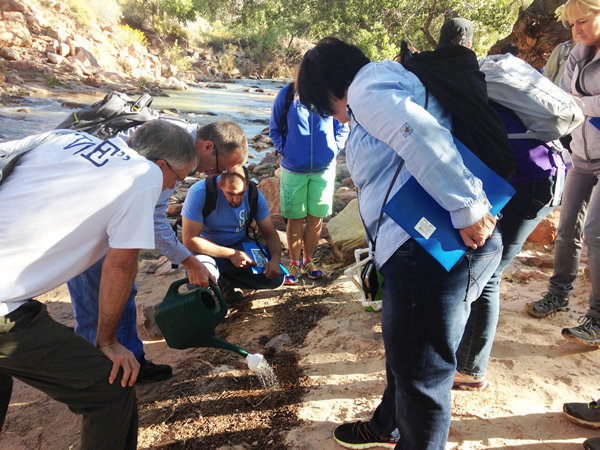Education and Outreach News
May 16, 2018
Brian Head Revisited: Outdoor Classroom
iUTAH researcher Jackie Grant has been in the news for her work to create a community classroom out of the charred remains of the 2017 Brian Head fire site, which damaged more than 72,000 acres of Dixie National Forest and Bureau of Land Management land. Grant, a biology professor at Southern Utah University, received funding last year from the Bureau of Land Management’s Colorado Plateau Native Plant Program to collect seeds from native plants for research.
A media release provided by Utah Public Radio’s Kerry Bringhurst said that Grant is “working with citizen scientists to help restore the damaged land. Two SUU community education courses taught June 7-22 and July 30- Aug. 14 will give participants the opportunity to work with forest and land managers.” When asked about the program, Grant welcomed “the community to interact with the federal agencies and an educator, myself, to learn about plants and how we use them to restore the land after the fire."
The story goes on to add that, “the course also includes training for citizen scientists who want to contribute to a global database. 'And teach other scientists all over the world about the amazing diversity of plants and possibly some insects that we have down here in southern Utah.’”
Press: Utah Public Radio
Related news article: Fighting Wildfires with Wildflowers
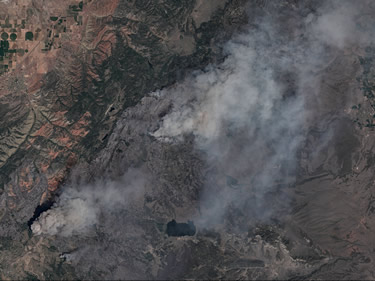
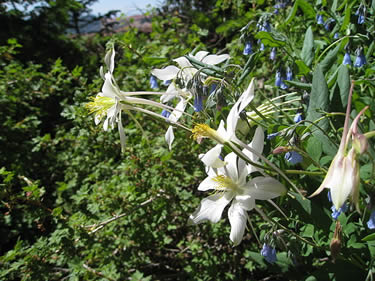
Jackie Grant, a biology professor at SUU, to lead community courses on restoration with native plants at 2017 Brian Head fire site. Credit: Wikimedia Commons
May 16, 2018
HESS Best Paper Award for iUTAH Collaboration
Former iUTAH postdoctoral researcher Erik Oerter, along with Molly Malone, Louisa Stark, and Gabriel Bowen, and others received the Jim Dooge Award 2017 for the best paper in the European Geophysical Union's flagship journal "Hydrology and Earth System Science.”
The paper explains science outreach activities and lessons developed to teach high school students, university students and high school teachers about isotope hydrology and the water cycle. The approach connects common fruits to the global water cycle, offering examples through lecture, demonstration, and lab activities introduced at iUTAH’s Summer Research Institute. Materials were also evaluated through pre- and post- tests tied to learning objectives, as well as participant feedback surveys.
The method and ideas explored in this paper offer readers a solid approach to the ways that outreach materials can engage students in learning activities about how humans interact and find patterns in their environment through examining the water cycle.
Paper: Oerter, E., M. Malone, A. Putman, D. Drits-Esser, L. Stark, and G. Bowen. 2017. Every apple has a voice: using stable isotopes to teach about food sourcing and the water cycle. Hydrology and Earth System Sciences, 21:3799-3810. 10.5194/hess-21-3799-2017.
Related news article: Classroom Lesson Leads to Publication
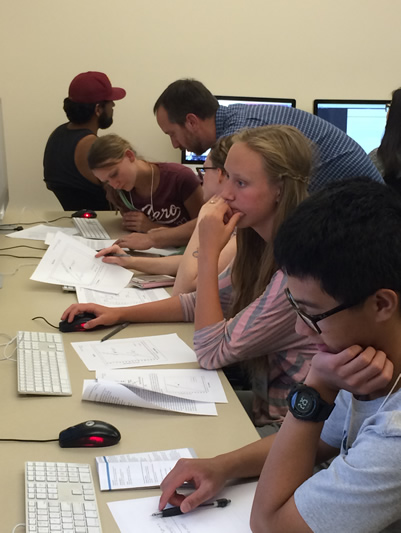
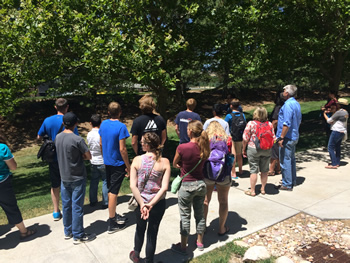
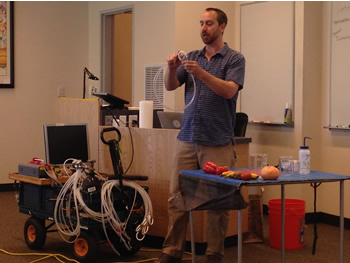
Credit: iUTAH Summer Research Institute
May 15, 2018
Student Honors for Outstanding iFellows
iUTAH wants to congratulate graduates across the state, and highlight the outstanding achievements by a few of the undergraduates that lined up to receive their hard-earned degrees this May.
Southern Utah University conferred a degree on Donald Long. A recent article in The Independent by SUU writer Nikki Koontz described Long’s journey from homelessness to first-generation college graduate, highlighting his “deeply rooted thirst to engage in research.” Mentored by Fredric Govedich, SUU department chair of biology, among others, he was involved in four major research projects, including the iFellows undergraduate research fellowship program.
As part of the 2015 iFellows cohort, Long researched the effects of nutrients and pharmaceutical pollution on stream biofilms, later presenting this research at national conferences alongside Beth Ogata, Zach Aanderud, and Michelle Baker. Koontz said that “Long will graduate this May with a double major in biology and nutrition and a minor in chemistry. He will take the MCAT and start applying for medical schools this fall with the goal to study internal medicine. During his gap year, Long has plans for a post-baccalaureate program, which entails a year of intensive research at an R-1 institution.”
Utah State University recognized two past iFellows undergraduate researchers, Lindsay Capito, 2017, and Jesse Fleri, 2015. Capito was named Outstanding Senior of the Year for the Watershed Sciences Department. She plans to continue her education at USU as a graduate student, studying Didymosphenia geminata, also known as ‘Didymo’ or ‘rock snot,’ and a possible connection to glacier recession.
Also from the Quinney College of Natural Resources at USU, Jesse Fleri, graduated with Honors and was recognized with the Peak Prize: Undergraduate Researcher of the Year. The future looks wet for Fleri as he continues to pursue projects in aquatic and marine environments. He says “I am fascinated by changes happening over large spatial extents and really enjoy the complexities that inherently come with working in dynamic systems.” To this end, he will be moving to Canada later this summer to continue his studies as a graduate student funded by the University of British Columbia, and conduct research throughout the San Juan and Gulf Islands to understand how bottom-up and top-down trophic cascades are inhibiting the conservation and restoration of Garry Oak ecosystems.
Fleri says of his experience as an iFellow that it “taught me a lot about what I wanted out of an adviser, a lab, and a project. It was great being forced to completing a project over a single summer because you have to learn about all the stages of research. I learned that water chemistry was not a field I would want to pursue and that my interests were more biology or physics based but I couldn't have known that prior to that summer.”
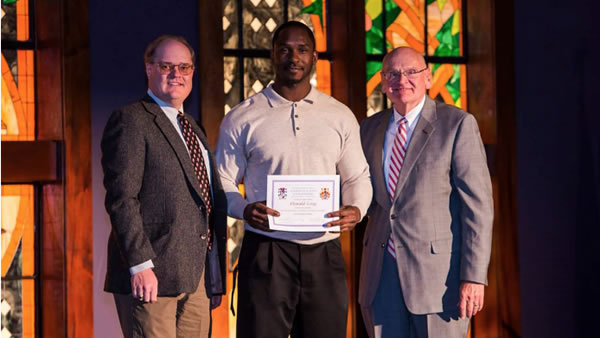
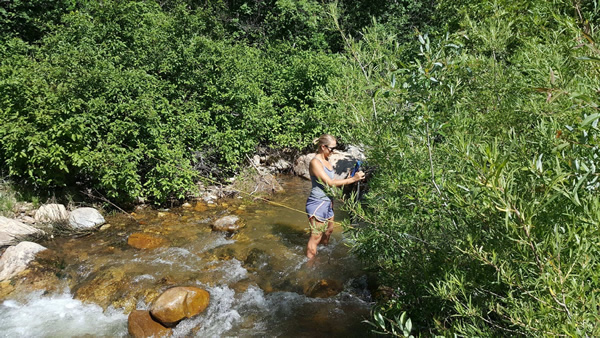
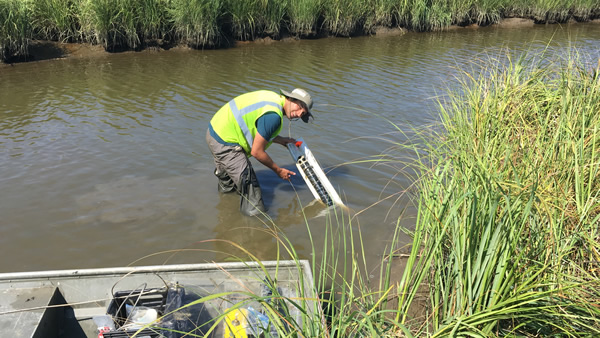
April 16, 2018
Bean Museum Involves Visitors in Local Watershed
The Bean Life Sciences Museum, located on the Brigham Young University campus, has partnered with iUTAH and the Natural History Museum of Utah to place an interactive display in the museum to help visitors learn about their local watershed. Based on a display developed by NHMU in 2015, the Bean Museum’s version allows visitors to see and interact with live data collected from the Provo River watershed.
The exhibit uses the iUTAH network of aquatic and climate sensor stations from GAMUT, which stands for “Gradients Along Mountain to Urban Transitions.” GAMUT sensor stations, located in three of Utah’s most populated watersheds: Red Butte Creek, Logan River, and Provo River, traverse the landscape from mountain to urban settings. Data from these stations are monitored and used for solving a wide range of water-related problems. From diagnostics and restoration of impaired urban rivers to modeling future water availability, the data help identify irregularities in Utah’s waterways.
Installed in February 2018, the display has been well received offering visitors the opportunity to explore the Provo River without leaving the comforts of a warm museum building. Visitors can become researchers, seeing and comparing changes in water levels and temperatures in real-time. They also learn to be water-wise citizens as they gain a better understanding of the impacts of pollution and population on their watershed.
“The Provo Watershed exhibit has been a great resource to teach kids about how different properties of water affect the wildlife,” said Meagan Grasley, an educator at the Bean Museum. “Children have loved looking at the different wildlife that live at each part of the watershed. Overall, it has brought more awareness to the patrons of their local ecosystem.”
This interactive display at the Bean Museum is just one of the many examples of legacy products that will be available for research and education long after the iUTAH project ends in July 2018.
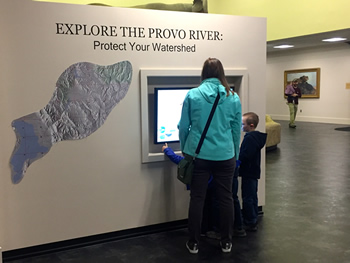
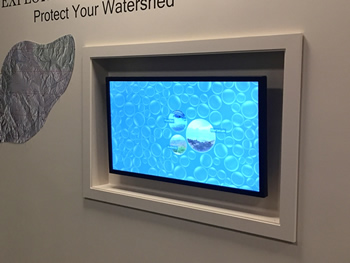
April 6, 2018
Outdoor Learning Reaches a Larger Classroom
The benefits of outdoor learning have been in the news for the past few years. Studies have found that going outdoors to learn science connects students and teachers to the natural environment. It reaches these students in new and different ways and gives them real world examples of what they are learning about in their classrooms.
Given the aim of the iUTAH project to engage and build a water-wise citizenry, it seemed only fitting that the project partnered with the Natural History Museum of Utah’s Taking Learning Outdoors (TLO) program. Over the six years that the TLO program was active in Utah schools, it was able to equip 98 K-12 teachers with resources, information, and professional insight that has helped them bring their local watershed into their classrooms.
Supported by iUTAH and facilitated by NHMU, teachers in TLO cohorts participated in a year-long series of workshops led by science and education experts from around Utah. Teachers examined their local watershed and learned how to most effectively incorporate these natural science into their curriculum. These teachers then brought what they learned into their classrooms, helping the program to reach over 12,000 students. When asked about their experience, one teacher said, “I feel that my confidence has increased as a result of realizing that science is all about using observations to describe and define our natural environment. Observations cannot be wrong. They can become more specific, defined and refined over time but they aren’t wrong. This helped me to be less afraid of science and love it more.”
A lasting legacy of the TLO program is the curriculum and insights available on NHMU’s website. Now, these lessons have been made available to encourage teachers to continue to take their classes outside by providing resources and lesson plans to help teachers feel more comfortable teaching outdoors. These lessons even include resources developed by Nancy Bo Flood, the author of Water Runs Through This Book, a book supported by iUTAH and given to many libraries, schools, and students throughout the state.
While the TLO program has ended its formal teaching program, banners now hang in 50 schools across the state that participated in the program. These banners encourage use of the lessons developed over the past five years. They also remind TLO teachers to share what they learned, helping their students to take an active interest in their watershed in a multi-disciplinary way.
